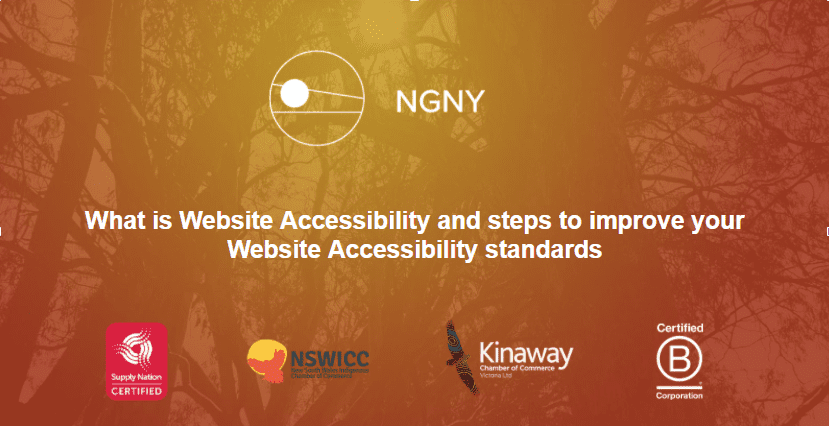
The world wide web must be accessible for everyone regardless if someone has a condition that affects their capabilities of using the hardware or software utilities of technology. This is the core of website accessibility. Millions of internet users have special needs which make using and navigating through websites a difficulty if not an impossibility for them. But let me tell you that there is a solution for that. These days, it takes a deliberate effort to make your website inclusive for everyone. Ensuring that your website is accessible and friendly to users is important not only for your humanistic contribution but in broadening your reach. This goes to show that you value inclusivity and making sure that everyone can access your site especially the minority with special needs to be addressed. Further, some countries have enacted laws regarding strict implementation on web accessibility.
Some of the common conditions that affect people in using websites include visual, hearing, physical, motor skills impairment, photosensitive seizures and cognitive disabilities. To address these, website owners incorporate assistive technologies in browsing the internet. Among those solutions incorporated are the use of screen readers vocalizing the text on the website page, speech recognition that converts speech into text, Braille system and friendly keyboard design to accommodate those with special needs.
In 1997, the Web Accessibility Initiative project began working to help improve accessibility online. The Web Content Accessibility Guidelines, also known as WCAG, contains the guidelines specifically outlining the steps you can take to make your site more user-friendly. Microsoft and WordPress are some of the organizations which have their own accessibility team specifically attending to concerns regarding web accessibility. In this article, we will be sharing some ways on how to improve your website accessibility standards.
Before we give you the tips, it is important to note that everything starts with the right Content Management System (CMS) you choose your site to run on. One of the best examples of a good CMS is WordPress when it comes to accessibility. That is not to say however that other platforms are not good, these days there are a lot of CMS which are very friendly and versatile in providing ease of use.
1. Begin with accessibility in mind in creating your content.
The heart of your site is content. Your user should have the convenience and ease in navigating and obtaining information in your website. Thus, make sure to spell out acronyms before constantly using them for brevity purposes in the whole website. The correct usage of punctuations, keeping content brief and precise are some manifestations of this tip. In addition, it’s best to avoid using tables for anything but tabular data. For example, you should never use a table for layouts, lists, or anything else. This can be confusing to screen readers and similar devices.
2. Ensure your site is keyboard-friendly.
This is a primary consideration. A website must work without a mouse because many assistive technologies rely on keyboard-only navigation. As such, it must be possible to use all of your site’s major features via a keyboard and nothing else. This includes accessing all pages, links, content, and so on. The most common way of navigating using a keyboard is with the Tab key. This will jump between areas on a page that can have “keyboard focus,” which includes links, buttons, and forms. Therefore, your goal should be to ensure that all web content and navigation can be accessed using Tab.
3. Make Sure All Content Is Easily Accessible.
Content isn’t a problem until such qualifies to be a dynamic content. It is said to be dynamic if it changes without the page it’s on reloads. The site must ensure that it informs assistive tools of chang to avoid this problem. Utilizing ARIA landmarks, tags added to content in order to clearly define it on the page is one way to address dynamic content. There is an option to tag dynamic content as a “live region,” which enables screen readers and similar devices to understand the content as it changes.
4. Add Alt Text to All Images
You may underestimate this step but adding alternative text for an image is important because this acts as a replacement for the image if it fails to load. However, alt text is also accessed by screen readers to “read” the picture.
5. Select colors carefully.
As you know, color schemes are also what can make or break a website’s overall look. Hence, making sure that your color combinations are friendly to the eyes and can make your text standout because after all we are after the fact that visitors got a thing or two on your website. Ideally, you should set a dark color against a light one, making sure that they don’t bleed into each other. Avoid using too many different fonts, in different sizes and colors.
6. Avoid automatic navigation and media.
The goal here is website accessibility which presupposes that visitors come to your site because they need something or simply got curious about it. Hence, if you bombard them with auto-play videos or carousels, they might get annoyed and get confused as to finding out how to stop these videos from playing or get distracted from the things going around in your site. Thus, defeating the purpose of website accessibility.




